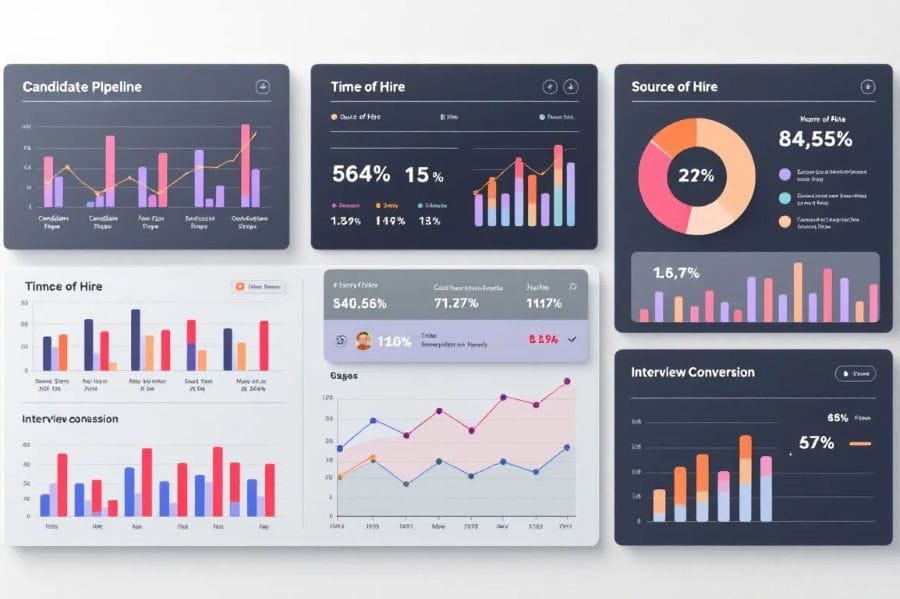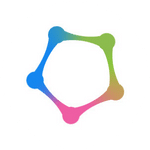Key Takeaways
The world of talent acquisition has undergone a seismic shift. Gone are the days when companies could rely solely on newspaper classifieds and career fairs to attract top talent. Today’s most successful organizations are embracing digital recruiting strategies that not only expand their reach but also dramatically improve their hiring efficiency and effectiveness.
In 2025, the competition for skilled professionals has reached unprecedented levels. Companies that continue to rely on traditional methods are finding themselves at a significant disadvantage, losing quality candidates to more digitally-savvy competitors. The organizations that thrive are those that have fully embraced the digital transformation of their recruitment process.
This comprehensive guide will walk you through everything you need to know about digital recruiting, from fundamental concepts to advanced strategies that can give your organization a competitive edge in today’s talent market.
What is Digital Recruiting?
Digital recruiting represents the strategic use of technology, online platforms, and digital tools to attract, source, engage, and hire candidates. Unlike traditional recruiting methods that relied heavily on physical networks, printed advertisements, and in-person processes, digital recruitment leverages the power of the internet to connect employers with potential candidates across the globe.
The evolution from traditional to digital recruiting has been remarkable. In the early 2000s, online job boards like Monster and Indeed began replacing newspaper classifieds as the primary channel for job advertising. The emergence of social media platforms, particularly LinkedIn, Facebook, and Twitter, introduced social recruitment as a game-changing approach where professional networks became central to candidate sourcing.
Now, the industry is entering a new era driven by advanced AI. Unlike keyword-based search that relies on rigid matching, next-generation AI technologies understand context, intent, and the holistic profile of both candidates and roles. This shift enables recruiters to go beyond resumes and job descriptions, uncovering deeper connections between skills, experiences, and potential. The result is smarter, faster, and more accurate talent matching, reshaping the way organizations find and engage the right talent.

Key components of digital recruiting include applicant tracking systems that automate candidate management, social recruiting through professional networks, video interviewing for remote assessment, and AI-powered candidate matching that can identify the best fit for specific roles. These technologies work together to create a seamless, efficient hiring process that benefits both employers and job seekers.
The distinction between digital and traditional recruiting is stark. While conventional methods might involve posting jobs in local newspapers, attending job fairs, or relying on employee referrals, digital recruiting provides access to passive candidates, who represent approximately 70% of the global workforce. It enables real-time communication, automated screening processes, and data-driven decision-making that traditional methods cannot match.
The Digital Recruiting Revolution: Why It Matters in 2025
The statistics paint a clear picture of the digital recruiting revolution. Research shows that 79% of candidates now use online resources during their job search, a dramatic increase from just 39% in 2015. This shift in candidate behavior has forced innovative companies to meet potential employees where they already spend their time – online.
Job applications have increased by 33% in 2024 alone, creating an unprecedented volume of candidates that requires more efficient digital processes to manage effectively. Traditional recruiting methods cannot handle this scale of candidate flow while maintaining quality and speed in the hiring process.
The rise of remote work has further accelerated the need for digital recruiting strategies. Companies are no longer limited to hiring within their immediate geographic area. Still, this global talent access requires sophisticated digital tools to source, assess, and onboard candidates from around the world.
Organizations that embrace digital-first recruiting strategies are gaining a significant competitive advantage. They’re able to identify and engage top talent faster, reduce their cost per hire, and build stronger employer brands that attract quality candidates organically.
Core Benefits of Digital Recruiting
The transformation to digital recruiting delivers measurable improvements across every aspect of the hiring process. Companies that have made this transition report dramatic improvements in efficiency, cost-effectiveness, and access to quality talent.
Expanded Talent Pool and Global Reach
Digital recruiting breaks down geographical barriers that have traditionally limited talent acquisition efforts. Companies can now access passive candidates who represent the majority of skilled professionals – individuals who aren’t actively job hunting but might be open to the right opportunity.
This expanded reach enables organizations to source talent from international markets without the logistical complications of traditional recruiting methods. A software company in New York can easily identify and engage a talented developer in Eastern Europe, while a marketing agency can discover creative professionals from across different continents.
The ability to reach diverse candidate pools through multiple digital channels simultaneously means companies can build more inclusive teams and tap into previously unexplored talent markets. This diversity often leads to better business outcomes and more innovative solutions.
Cost-Effective Hiring Solutions
One of the most compelling advantages of digital recruiting is the significant reduction in recruitment costs. Companies typically achieve up to 50% cost savings compared to traditional methods by eliminating expenses such as travel costs, print advertising, and physical recruitment events.
The return on investment becomes even more apparent when considering the efficiency gains. Digital tools automate many time-consuming administrative tasks, enabling recruiters to focus on high-value activities such as candidate relationship building and strategic planning.
Platforms like Talentprise offer success-based pricing models that align costs with actual hiring outcomes, providing organizations with cost optimization opportunities that traditional recruiting agencies cannot match. This approach ensures companies only pay for results, not just recruiting activity.
Improved Efficiency and Speed
Digital recruiting dramatically reduces time-to-hire through automated screening processes and streamlined workflows. Organizations report 2-4 week reductions in their typical hiring cycles, which can mean the difference between securing top talent and losing them to competitors.
The automation of administrative work can reduce the recruiting team’s workload by up to 50%, freeing up valuable time for strategic activities. Digital workflows ensure that candidates move smoothly through each stage of the recruitment process without unnecessary delays or communication gaps.
Perhaps most importantly, digital recruiting operates 24/7. Candidates can discover opportunities, submit applications, and even complete initial screening processes outside of traditional business hours, accelerating the entire hiring timeline.
Essential Digital Recruiting Strategies for 2025
Building a comprehensive digital recruiting framework requires strategic thinking and careful implementation across multiple channels and touchpoints.
Mobile-First Recruitment Approach
With 67% of job applications now coming from mobile devices, optimizing for mobile isn’t optional – it’s essential. This means creating mobile-responsive career pages, streamlined application processes that work seamlessly on smartphones, and ensuring all candidate communications are mobile-friendly.
Progressive web app development can provide candidates with app-like experiences without requiring downloads. This approach reduces friction in the application process and ensures candidates can engage with opportunities regardless of their device or technical constraints.
Testing and optimization across different device types and operating systems ensures that no qualified candidates are excluded due to technical barriers. Regular mobile usability testing should be part of every digital recruiting strategy.
Social Media and Professional Network Recruiting
LinkedIn remains the powerhouse of professional recruiting, with 50% of recent hires discovered through professional networks. However, effective social recruitment extends beyond LinkedIn to include Facebook, Twitter, and Instagram, each offering unique opportunities to connect with different demographic segments.
Employee advocacy programs can amplify recruiting reach exponentially. When employees share opportunities and positive employer content through their personal networks, it creates authentic endorsements that resonate more strongly than corporate messaging.
Content marketing strategies that showcase company culture, employee success stories, and industry thought leadership help attract passive candidates who might not be actively searching but could be influenced by compelling employer content.
Employer Branding in the Digital Age
Building a strong online employer reputation has become crucial, with 83% of recruiters citing its importance in attracting quality candidates. This involves creating authentic, engaging content that accurately represents company culture and values.
Career page optimization extends beyond basic job listings to include employee testimonials, day-in-the-life videos, and detailed information about benefits, growth opportunities, and company mission. These elements help candidates self-select and apply only when there’s genuine alignment.
Managing presence on review sites like Glassdoor requires proactive engagement with employee feedback and transparent communication about company improvements. Positive reviews can significantly impact candidate perception and application rates.
Digital Recruiting Tools and Technologies
The technology stack powering modern recruitment continues to evolve, offering increasingly sophisticated capabilities for candidate sourcing, assessment, and management.
Applicant Tracking Systems (ATS) and AI-Powered Platforms
Modern ATS solutions do far more than simply store resumes. They provide comprehensive candidate relationship management, automated communication sequences, and integration capabilities with other recruiting tools and platforms.
AI-powered candidate matching uses machine learning algorithms to identify candidates who are most likely to succeed in specific roles based on historical hiring data and performance outcomes. This technology can dramatically improve the quality of hire while reducing time spent on manual resume screening.
Integration capabilities allow ATS platforms to work seamlessly with job boards, social media platforms, assessment tools, and other recruiting technologies, creating a unified ecosystem that maximizes efficiency and candidate experience.
Video Interviewing and Assessment Tools
Asynchronous video interviewing platforms allow candidates to complete initial interviews on their own schedule, reducing coordination time by up to 50% while providing consistent evaluation criteria across all candidates.
Live video interviewing solutions have become essential for remote hiring processes, offering features like screen sharing, collaborative note-taking, and integration with calendar systems to streamline scheduling and follow-up.
Technical assessment tools can evaluate candidate skills through practical exercises, coding challenges, or job-specific simulations, providing objective data to support hiring decisions while giving candidates opportunities to demonstrate their capabilities.
Recruitment Marketing and Analytics Platforms
UTM tracking and Google Analytics integration enable precise measurement of recruiting campaign performance, helping teams understand which channels and messages generate the highest quality candidates.
Marketing automation tools can nurture candidate relationships over time, keeping potential employees engaged with the company even when they’re not actively job searching. This approach builds a pipeline of interested candidates for future opportunities.
Data analytics platforms provide insights into recruitment performance, identifying bottlenecks in the hiring process and opportunities for improvement. Regular analysis of these metrics enables continuous optimization of recruiting strategies.
Best Practices for Digital Recruiting Success
Implementing digital recruiting tools is only the first step. Success requires following proven best practices that optimize both efficiency and candidate experience.
Candidate Experience Optimization
Streamlined application processes minimize friction points that might cause qualified candidates to abandon their applications. This includes mobile-optimized forms, clear instructions, and progress indicators that show candidates how much of the process remains.
Clear communication throughout the recruitment journey sets appropriate expectations and keeps candidates engaged. Automated status updates, personalized messages, and transparent timelines help maintain positive relationships even with candidates who aren’t ultimately hired.
Personalized candidate interactions, even when automated, demonstrate respect for candidates’ time and interest. Using candidate names, referencing specific qualifications, and tailoring communications to their experience level creates more meaningful connections.
Data-Driven Recruitment Decisions
Tracking key metrics, including application rates, conversion rates, and quality of hire, provides the foundation for continuous improvement. These metrics help identify which strategies are working and where adjustments are needed.
A/B testing strategies for job postings and recruitment campaigns can reveal significant differences in candidate response rates based on messaging, timing, or channel selection. Regular testing and optimization lead to measurably better results over time.
Predictive analytics can identify patterns in successful hires, helping recruiters focus their efforts on candidates with the highest probability of success. This approach improves both efficiency and hiring outcomes.
Personalization and Targeted Outreach
Customized messaging strategies for different candidate segments acknowledge that developers, marketers, and executives may respond to varying types of outreach and messaging approaches.
Behavioral targeting, based on candidate online activity and preferences, enables more relevant and timely communication. Understanding how candidates interact with content and opportunities enables more effective engagement strategies.
Relationship building strategies for engaging passive candidates require patience and value-driven interactions. Providing industry insights, career advice, and networking opportunities can build relationships that eventually lead to successful hires.
Measuring Digital Recruiting Performance
Effective measurement is essential for optimizing digital recruiting strategies and demonstrating ROI to organizational stakeholders.
Key performance indicators should include time-to-hire, cost-per-hire, and quality-of-hire metrics that provide a comprehensive view of recruiting effectiveness. These metrics should be tracked consistently and compared against both historical performance and industry benchmarks.
Candidate satisfaction surveys and Net Promoter Score (NPS) tracking provide valuable insights into the candidate experience, enabling the identification of areas for improvement in the recruiting process. High candidate satisfaction scores often correlate with better employer branding and increased referrals.
ROI calculation frameworks should account for both direct costs (technology, advertising, recruiter time) and indirect benefits (improved quality of hire, reduced turnover, faster productivity ramp-up). This comprehensive approach demonstrates the actual value of digital recruiting investments.
Benchmarking against industry standards and competitor performance enables organizations to understand their relative position in the talent market and identify opportunities for a competitive advantage.

The Future of Digital Recruiting
The digital recruiting landscape continues to evolve rapidly, with emerging technologies promising even more sophisticated capabilities for talent acquisition.
Artificial intelligence is advancing beyond simple keyword matching to understand context, cultural fit, and growth potential. AI-powered candidate matching will become increasingly accurate as machine learning algorithms process more data about successful hiring outcomes.
Virtual reality and augmented reality applications in recruitment are beginning to emerge, offering immersive experiences that allow candidates to “visit” offices, meet team members, and even simulate work environments before making commitments.
Blockchain technology offers potential solutions for credential verification and candidate background checks, creating tamper-proof records that could streamline the verification process while increasing security and trust.
Predictive analytics and machine learning will continue advancing, potentially identifying successful candidates based on patterns that human recruiters might miss. These technologies may also predict candidate likelihood to accept offers, stay with companies long-term, and perform successfully in specific roles.
The integration of platforms like Talentprise with emerging technologies will enhance talent discovery capabilities, potentially offering real-time matching between open positions and qualified candidates based on constantly updated skills assessments and career preferences.
FAQ
How much does digital recruiting cost compared to traditional methods?
Digital recruiting typically reduces costs by 40-50% compared to traditional methods by eliminating print advertising, reducing travel expenses, and automating administrative tasks. The exact savings depend on company size and recruiting volume, but most organizations see significant ROI within the first year of implementation.
What are the biggest challenges in implementing digital recruiting?
Common challenges include resistance to change from hiring teams accustomed to traditional methods, integration difficulties with existing HR systems, maintaining personal connections in digital interactions, and keeping up with rapidly evolving technology platforms. Success requires strong change management and ongoing training.
How do I measure the success of my digital recruiting strategy?
Key metrics include time-to-hire reduction, cost-per-hire decrease, application-to-interview conversion rates, candidate satisfaction scores, and quality-of-hire assessments. Establish baseline measurements before implementation and track improvements quarterly to demonstrate ROI and identify optimization opportunities.
Can small businesses benefit from digital recruiting tools?
Absolutely. Many digital recruiting tools offer scalable pricing models suitable for small businesses. Free platforms like LinkedIn and low-cost ATS solutions can provide significant advantages over traditional recruiting methods, even for companies with limited budgets. The efficiency gains often justify the investment quickly.
What skills do recruiters need to be effective in digital recruiting?
Modern recruiters need technical proficiency with recruiting software, social media marketing skills, data analysis capabilities, content creation abilities, and an understanding of SEO principles for job posting optimization. They should also maintain strong communication skills and cultural awareness for engaging diverse, global candidate pools.

Editorial Team
Our team is fueled by a passion for crafting valuable content that enriches the experiences of our users, customers, and visitors. We meticulously select meaningful and unbiased topics ranging from tips and guides to challenges and the latest in technology, trends, and job market insights. All curated with care and affection!
Hire Smarter. Faster. No Strings Attached.
Start your free trial, no credit card needed, and experience AI-powered talent sourcing that outperforms job boards and LinkedIn. Describe the role, or paste a job description, and instantly match your vacant role with the right candidates: no filters, Boolean, or training required.




